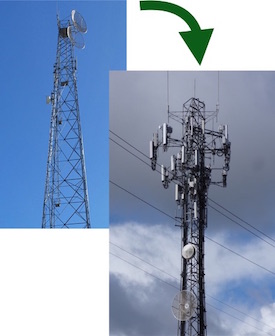
California cities (and counties) need to overhaul the way wireless broadband permits are processed. That’s the plain message that the California legislature sent last year, when it passed assembly bill 57. The new law put teeth in the Federal Communication Commission’s wireless shot clocks: if decisions – yes or no – on permit applications for new towers or other facilities aren’t made within 150 days, then the answer is yes. Permits are “deemed approved”.
It’s the same story, but with tighter deadlines, for modifications to existing facilities. Depending on the specific circumstances, California cities have 60 or 90 days to reach a decision on colocation of new equipment, such as antennas, on existing towers or other structures that already support wireless facilities. (And if you ask lawyers for mobile carriers, they’ll tell you the colocation shot clock might apply to any existing structure, whether or not there are antennas or other gear there already).
Joint Venture Silicon Valley held a Smart Cities conference in San Jose on Wednesday. I tag teamed a presentation on AB 57 with an attorney from AT&T – you can download my take on the new rules here. What was surprising was the extent to which we agreed. There’s plenty of room to argue the details, but the bottom line, no matter which side you’re on, is that the California legislature left very little room for lengthy public participation processes or bureaucratic procedures.
Cities still have all the discretion they ever had – arguably not much, but it’s still the same – over permits for new wireless facilities. But the decision has to be made quickly, and initial reviews of applications need to happen even faster – cities have 30 days to pause the shot clock by requesting additional information. After that, the clock runs whether or not all the work required by municipal codes or standard operating procedures is finished. And when it runs out, construction can begin.
